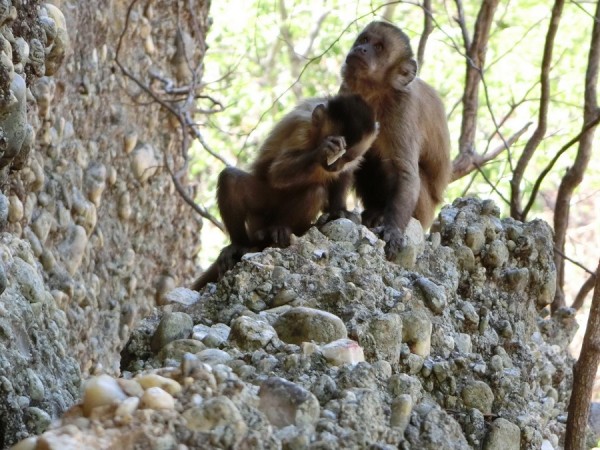By Ana Verayo, | October 20, 2016

Wild-bearded capuchin monkey in Serra da Capivara National Park, Brazil, unintentionally creating fractured flakes and cores.
Scientists have observed that monkeys in Brazil can use stone flakes as tools similar to early human ancestors before the invention of knives.
This new finding about Capuchin monkeys using stone tools could challenge prior evidence recovered from archaeological sites dating back to the Stone Age. Past research suggested that these sharp, thin stones were used as tools, presumably by early hominids, but this new study has found contrary evidence.
Like Us on Facebook
According to archaeologist Tomos Proffitt of the University of Oxford, studies from the last 10 years indicates that the production of sharp-edged stone flakes is common among a wider range of hominins and not necessarily just early humans.
Researchers say this new study shows that even modern primates also possess this advanced capability to make flakes and cores similar to prehistoric human tools that were once thought unique to hominins.
These stone flakes may appear as tools used by early humans and hominids, but for monkeys they are not intentionally used as tools. Scientists say that monkeys slam these stones together to reach lichen and minerals inside crevices.
The researchers behind this new study do not discredit past findings about the earliest hominin tools and artifacts that were recovered from multiple sites in Africa. However, their finding could challenge the concept of prehistoric tool making and its evolutionary process.
Proffitt says that the findings challenge previous ideas about the amount of "cognitive and morphological complexity" levels that are needed to produce multiple stone flakes.
This new study may provide insight into how the earliest humans are different from these Capuchin monkeys. According to archaeologist Michael Haslam of the University of Oxford, this tool is not unique to humans, but the how they are used is also vastly different from how monkeys are capable of doing.
This new study was published in the journal Nature.
-
Use of Coronavirus Pandemic Drones Raises Privacy Concerns: Drones Spread Fear, Local Officials Say

-
Coronavirus Hampers The Delivery Of Lockheed Martin F-35 Stealth Fighters For 2020

-
Instagram Speeds Up Plans to Add Account Memorialization Feature Due to COVID-19 Deaths

-
NASA: Perseverance Plans to Bring 'Mars Rock' to Earth in 2031

-
600 Dead And 3,000 In The Hospital as Iranians Believed Drinking High-Concentrations of Alcohol Can Cure The Coronavirus

-
600 Dead And 3,000 In The Hospital as Iranians Believed Drinking High-Concentrations of Alcohol Can Cure The Coronavirus

-
COVID-19: Doctors, Nurses Use Virtual Reality to Learn New Skills in Treating Coronavirus Patients







